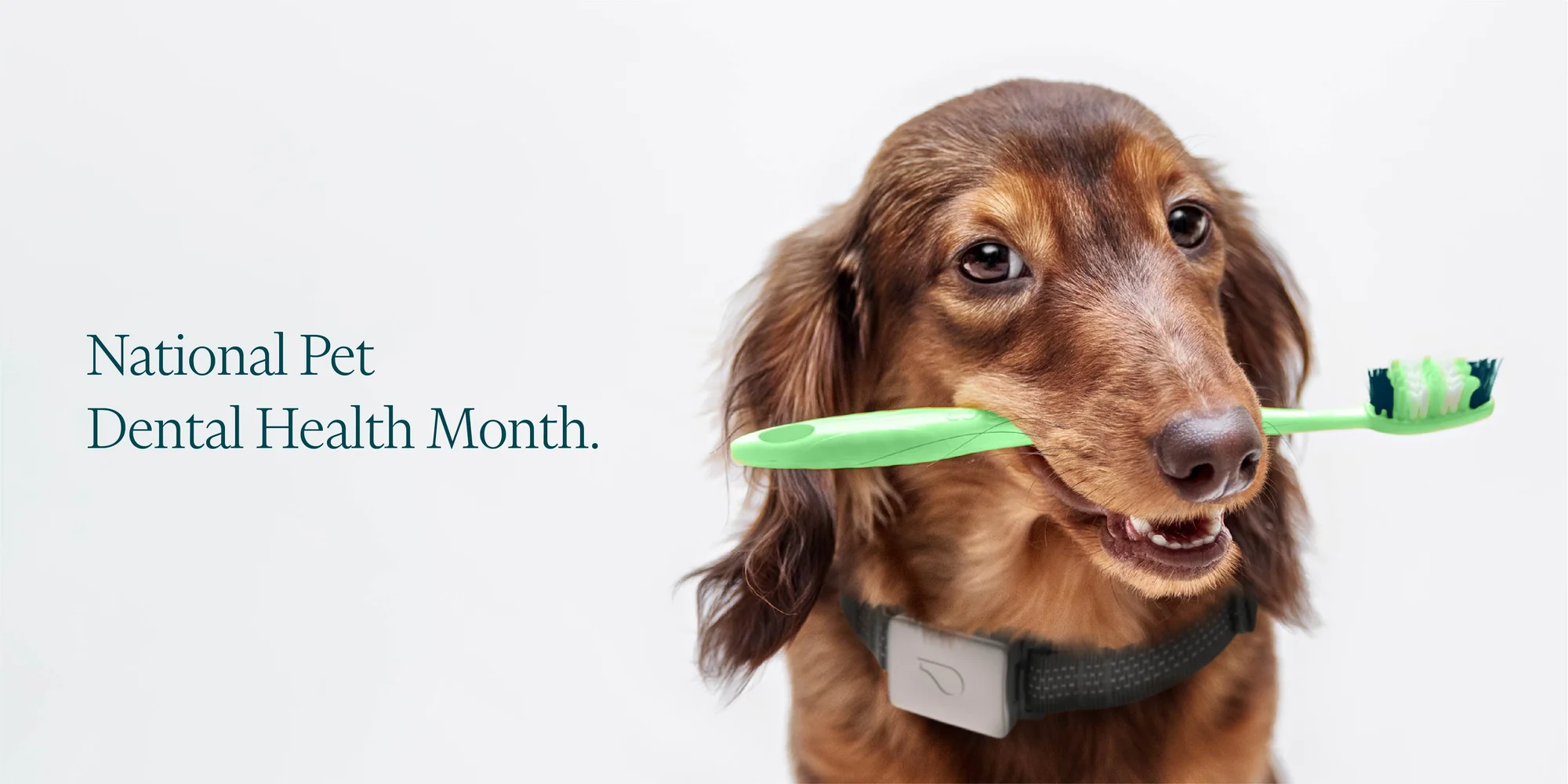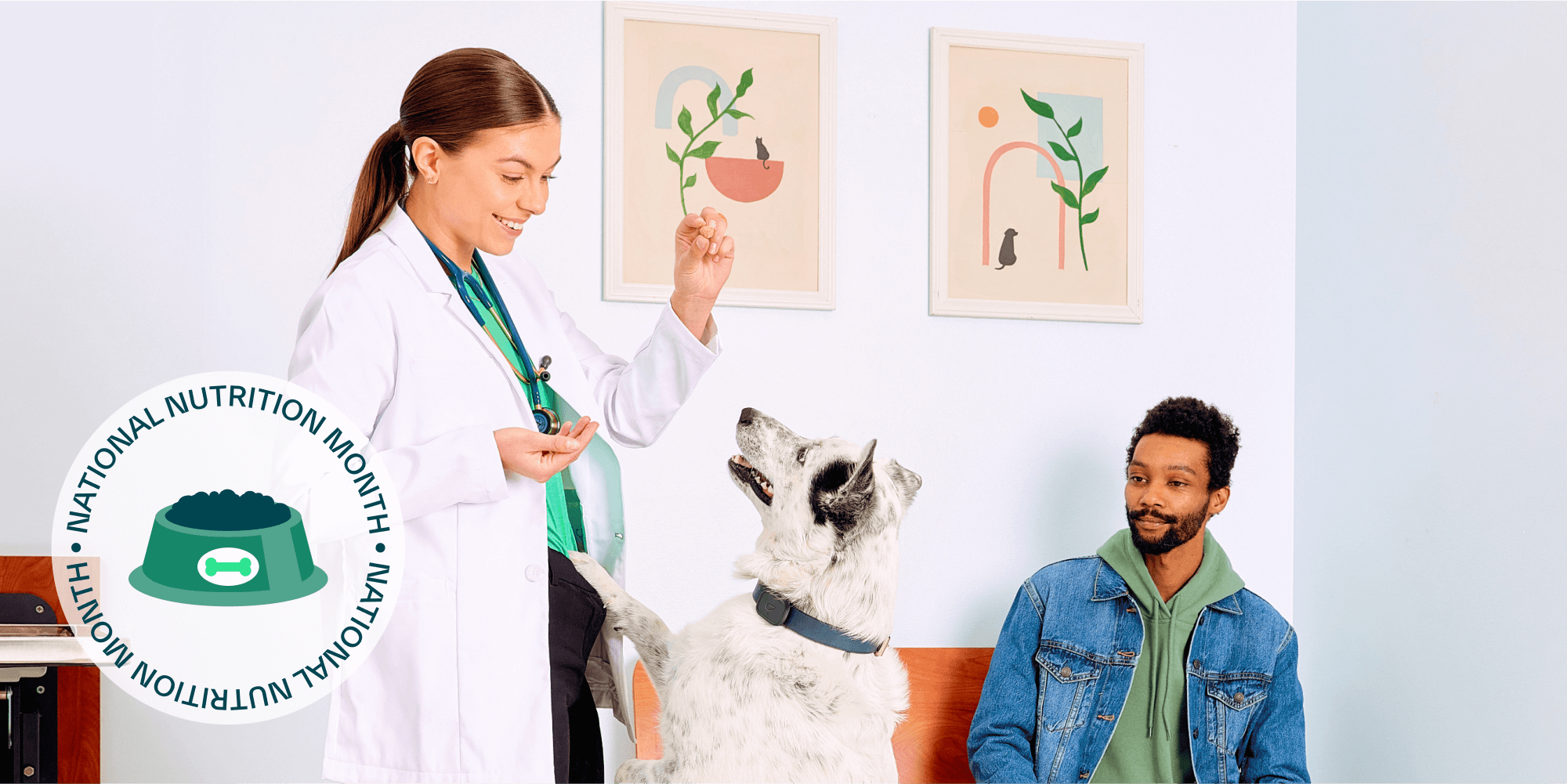Smile, It’s National Pet Dental Health Month

Your dog leans in for a wet kiss and…wow! She has terrible breath.
It’s tempting to blame dog bad breath on drinking from the toilet, snacking on kitty litter and licking fur but hellacious halitosis could also be a sign of health issues from poor oral hygiene and gum disease to diabetes, liver disease or kidney disease.
February is National Pet Dental Health Month. It’s a great time to establish an oral health routine to protect your dog’s pearly whites.
Create a plan: Check out videos and read articles about the importance of pet dental health. Check with your pet dental insurance provider to ask, “Does pet insurance cover dental?” Routine cleanings may be covered under your plan. You can also ask your veterinarian about National Pet Dental Health Month discounts on dental care.
Consider using the Whistle Health & GPS smart device, too. The device includes health monitoring and sends alerts if something is amiss (including frequent licking that could indicate dental issues), free access to tele-vet appointments to determine whether your dog may be experiencing dental pain and GPS monitoring and location alerts in case he hides when it’s time to go to the vet.
Watch for signs of dental disease: Red, swollen gums, tooth loss, excessive drool, bleeding gums, loss of appetite and bad breath are all signs of potential dental disease. If an abscess or infection causes dental pain, your pet may also paw at her mouth, lick incessantly or scratch her jaw. The Whistle Health and Whistle Health & GPS+ devices monitor for changes in behavior that could signal dental disease.
Consider diet changes: Good oral health starts with a good diet. Studies have shown that pets that eat dry kibble have better oral health than those that eat wet food. Dental chews, which are available for dogs and cats, can also help remove plaque and tartar and reduce gingivitis.
Start brushing: Your pets benefit from routine dental cleanings to remove plaque and tartar (and improve their breath). Use a fingertip toothbrush designed for pets along with pet toothpaste and brush your pet’s teeth daily. The earlier you establish a routine, the easier it’ll be to maintain good oral hygiene.
Schedule a checkup: Your veterinarian will also check your pet’s teeth and gums as part of their annual wellness exam and monitor for signs of dental disease. Scheduling routine dental cleanings can remove plaque and tartar and ensure that periodontal disease doesn’t progress into serious health issues.
If you notice that your dog has bad breath, don’t wait until their annual exam to have it checked out. Make an appointment with your vet to get to the root cause.
Good oral health is an important part of your pet’s overall wellbeing—and it helps improve their breath so you can look forward to those slobbery kisses. In February, snap a photo of your pet’s pearly whites and tag Whistle with #PetDentalMonth.














